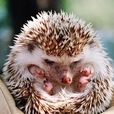Good evening,
Been developing new game for Android and want to implement different resolutions right this time.
I was always under the illusion that Mimmap's are the way to go. I mean, they automatically scale to the screen size? But after reading some of the articles, my illusions started to fade away.
It works well in 3D games, or even 2D games, where you can zoom in and out, get closer or further from object. Proper image is applied for better impression.
The article i was reading and the picture i found (http://www.badlogicgames.com/wordpress/wp-content/uploads/2010/12/mipmap.png) claims that mipmaps are supposed to be square of two.
But that's not what i need. Android phone fragmentation does not go from 1024 to 512.
I decided to go with 16:9 aspect ration and have to create as wide texture spectrum as possible in order to fit in.
Am i right or do i miss something with Mipmaps?





